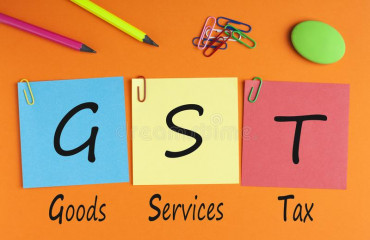
New Delhi: The Sixteenth Finance Commission that has just completed its round of state visits may have to go "a bit beyond" the standard parameters while computing the share of the country's revenue kitty between states and the Centre, said Manoj Panda, a member of the commission said.
New Delhi: The Sixteenth Finance Commission that has just completed its round of state visits may have to go "a bit beyond" the standard parameters while computing the share of the country's revenue kitty between states and the Centre, said Manoj Panda, a member of the commission said.
While Panda did not elaborate, his statement comes amid a growing clamour from wealthier Indian states–typically bunched around the western and southern regions–to be given a bigger share of the revenue.
Panda did mention, however, that the states' tax-to-GSDP (Gross State Domestic Product) ratios have remained stuck at 6-7% levels and that future tax collections will primarily hinge on GSDP growth.
His remarks, made in an interview with Mint, come as the 16th Finance Commission enters the deliberation phase, having completed its round of state visits over the past year.
The Commission, chaired by Arvind Panagariya, is now going through detailed memorandums submitted by various states and departments to shape its recommendations for the 2026–31 period.
"A major debate that has emerged is from the developed states in western India as well as southern India is that they are contributing more to the overall tax kitty of the country, but they are not getting adequate returns," Panda said.
"Of course, in any federation, there has to be some give and take. The weaker states have to be supported, but developed states are saying that the low-income states can't be supported beyond a point," he added.
Richer states have urged the 16th Finance Commission to take into account their contribution to national growth and tax revenue while recommending horizontal allocations across states. These states argue that while they contribute disproportionately to national GDP and tax collections, the distribution formula does not adequately reward their economic performance.
"They don't want to feel 'penalized'—a word that is often being used," Panda said.
"I think we may have to go a bit beyond the standard parameters," he added.
Standard parameters list the various metrics used by the 15th Finance Commission to decide on the division of the Central and state revenue kitty. These are: population, area (of the state), forest and ecology, income distance (disparities in per capita GDP), tax and fiscal efforts, and demographic performance.
Panda said there is some scope to improve tax enforcement at the state level, but noted that states have little room to manoeuvre on indirect tax rates, which are governed by the GST Council.
"The Commission completed the state visits just a month ago. Right now, discussions are going around state finances, general government finances and other related issues from the memorandums submitted by state governments, and presentations made by different central government departments regarding their past expenditure and expected levels for the next five years," Panda said.
He added that the Centre's memorandum is expected by July or mid-August.
The panel is working to an official deadline of 31 October, and Panda said that "there is unlikely to be any delay." The 16th Finance Commission's recommendations will cover the five years from 1 April, 2026, to 31 March, 2031.
The 16th Finance Commission, like its predecessors, is tasked with recommending how central tax revenues should be divided between the Centre and the states (vertical devolution), and how that share should be distributed among states (horizontal devolution).
It will also assess funding needs for disaster management and for strengthening local governments.
"You see the total kitty is given. We have to decide how much to keep for the Centre and how much to give to states. The 15th Finance Commission recommended a 41% share for states and 59% for the centre out of the divisible pool of the central taxes," Panda said.
"The other thing is how to do the horizontal distribution. In the horizontal distribution too, the total is 100. The moment you give more to one, somebody else will suffer. These are the balancing acts we have to do. We can't keep everybody happy in a zero-sum game," he added.
The debate also highlights diverging growth trajectories among states.
While some traditionally weaker states are showing signs of improvement, Uttar Pradesh being a notable example, others continue to lag.
"If the average income levels of states converge in the long run, resources needed on equity consideration will reduce," Panda said.
On state-level debt, Panda observed that capital expenditure-related borrowing remains sustainable if managed within the prudential norms outlined in the Fiscal Responsibility and Budget Management (FRBM) framework.
States are generally expected to maintain fiscal deficits within 3% of GSDP, he said.
During the pandemic, however, this threshold was relaxed by an additional 0.5%, and the Centre allowed 50-year interest-free loans to support state spending, he added.
"The Finance Commission can only suggest states keep their debt within a limit. Beyond that, the Centre and states will need to work together to keep expenditure, particularly subsidies, within bounds," he said.
"Overall, there should be some kind of broad consensus among the governments to avoid competitive populism," Panda added.
States are also demanding a higher share of central revenues, citing rising social sector commitments.
Meanwhile, the Centre has increasingly leaned on cesses and surcharges, which fall outside the divisible pool, to meet its spending obligations, even after raising the states' share by 10 percentage points a decade ago.
"It's a tough question to answer what exactly the requirements of the states are, and how they should be addressed. But, compared to a decade ago, states now are getting much more than before," Panda added.
